“When we get to a straight bit of road, we can bury the throttle, rejoice in the intake sizzle, revel in the roar, and hang on for dear life as two gallons of juice catapult us to the horizon. Muscle cars, in short, are not as clever as Ferraris. But they’re just as exciting. And they’re simpler, which, in a world of convenience food and remote control TV sets, is a good thing.”
Jeremy Clarkson – Top Gear, 2006
Being an automotive enthusiast here in America is a hell of a thing. See, unlike many other countries, we get one of the biggest selections of performance vehicles from nearly every manufacturer in the world, including those right here in America. Want a Japanese rear-wheel-drive performance coupe? You can get one. Looking for a Ferrari, Lamborghini, or Alfa-Romeo to get your heart pumping? You can get those too. Looking for a 700-plus horsepower muscle car with a supercharger whine you can hear from space? Yep, you guessed it, you can get that here too.
What this inevitably leads to is a sort of strange tribalism within the automotive community. It seems not only are you a fan of foreign or domestic vehicles, but if you’re a fan of domestics, then you must pick from one of the Big Three.
The question is, why? When did it become okay to bash on American cars as vehicles that are only good in a straight line? When did it become okay to talk trash about vehicles that simply have a different performance philosophy or different brand name?
The History of American Cars
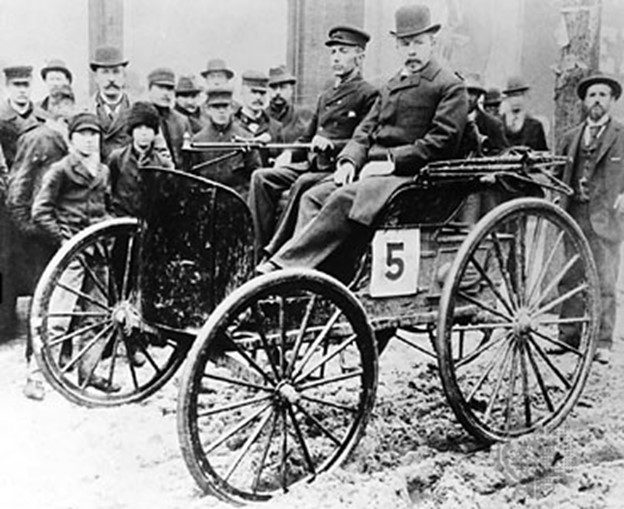
Although Karl Benz is generally considered the inventor of the automobile, the Americans really weren’t far behind the ball. In 1893, the Duryea Motor Wagon Company of Springfield, Massachusetts built a one-cylinder, 4 horsepower powered wagon known as the, you guessed it, the Duryea Motor Wagon. From that point on, manufacturers like Oldsmobile, and eventually Ford would refine and perfect the automobile into a faster, more efficient method of transportation. Crucially, Ford’s massive scaling of the assembly line would also make vehicles like Model T cheap enough for the average American family to buy.
As time marched on and America exited World War I, our vehicles moved from being mere transportation to statement pieces, with companies like Duesenberg, and Cadillac leading the way through this age of opulence. The Great Depression would change everything for Americans but it would also bring on one of the great heydays for American car manufacturers. Why? Hollywood. America was looking for escapism in the 1930s and this, along with advancements in film technology, would see Hollywood enter its first Golden Age.
Leading men like Clark Gable graced the screen and the pages of newspapers and magazines with remarkable custom rides like a 1935 Duesenberg JN Convertible, complete with white-walled Vogue Tyres and custom bodywork. Gable wasn’t the only person to enjoy the good life, as men and women from all over Hollywood would show off their custom Duesenbergs, Chryslers, and Cadillacs for the world to see. It could be argued that in this era, the true car enthusiast was really born.
Post-World War II saw a nation hungry for good things, and rife with engineering expertise from a long-fought war in two theaters. Cars, trucks, and even SUVs (Jeep, we’re looking at you) rose out of this era, and American car manufacturers like Ford, General Motors, and Chrysler started producing some amazing machines. From 55’ Chevy Bel Airs to Cadillac Eldorados with massive fins fit for the space age, this was an era where anything and everything went. It’s also the era where American performance vehicles started to really come into their own.
As the muscle car era started to flourish, motorsports also began to rise in popularity here in the states. From Indy to Daytona, manufacturers quickly realized that backing factory racing efforts were not only great for bragging rights but for marketing efforts as well. Suddenly, lightweight coupes and sedans were having larger and larger engines jammed under their hoods in hopes of seeking out a victory at the drag strip with their factory racing efforts and these machines soon became available for the average American. The rest is, as they say, history.
You Either Love it or Hate It
Some enthusiasts say that we never really grew out of this era as a country and that most American performance cars are bloated boats that can only do one thing well – go in a straight line. This is especially true from the perspective of places like Europe, where big power was never really the name of the game, but instead, drivers had fun with cars that offered tight handling around corners (Mini, for example). This mentality drew a line in the sand, even for people who lived right here in the land of the muscle car.
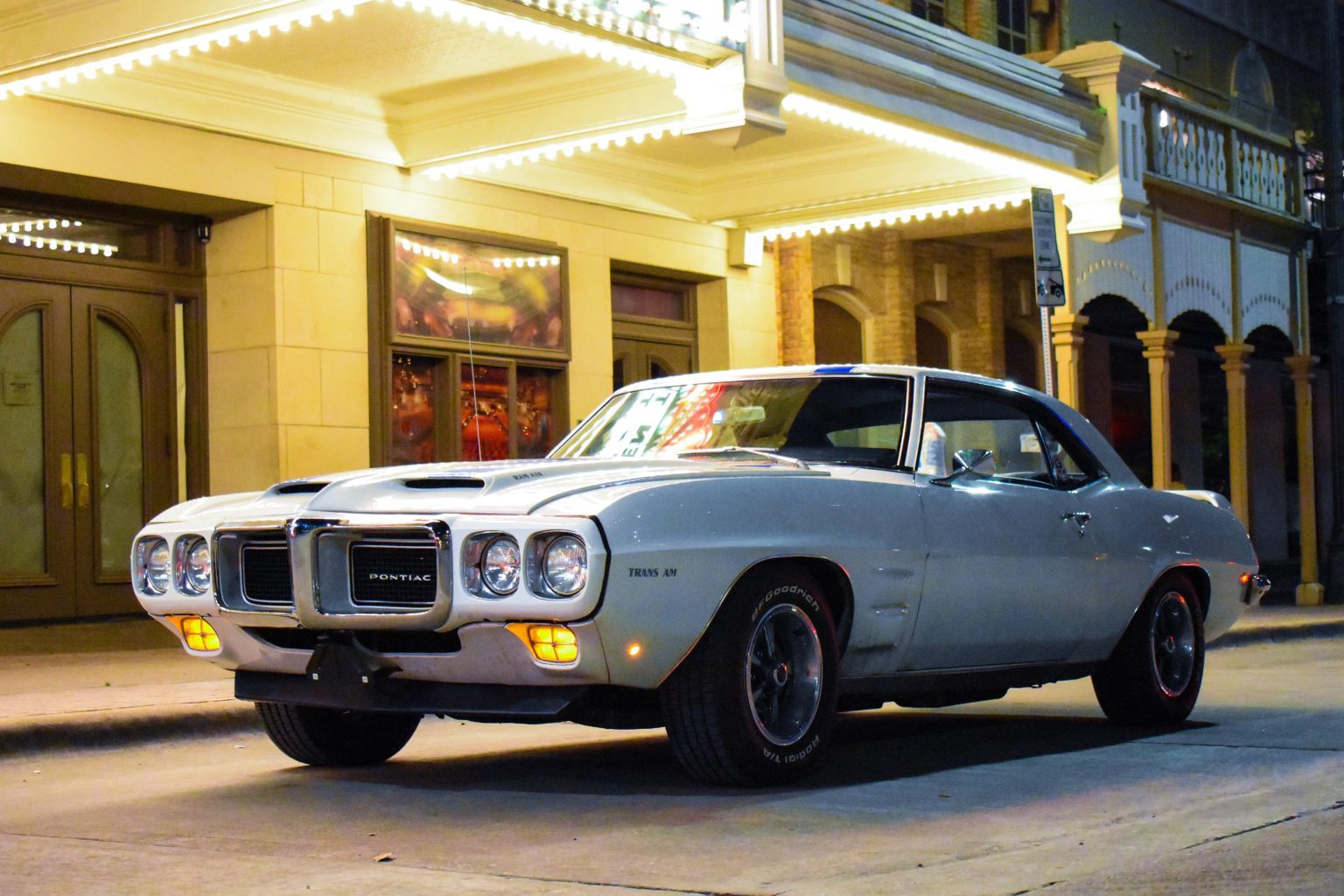
Once vehicles started to be imported in the 70s from places like Europe and Japan, American car enthusiasts began to see that the world did indeed exist outside of the ¼ mile. Sure, we had Trans-Am racing here on road courses, but by in large, the American mentality was big speed in a straight line. Ford’s victory against Ferrari at LeMans with their legendary Ford GT was more the exception than the norm. Import vehicles from brands like BMW and Porsche suddenly showed American’s an entirely different way of driving, and a better level of fit and finish to boot.
This dissection of the automotive enthusiast market never really stopped. Today, you have those that love imported cars and those that support American muscle. Sure, there are plenty of general car enthusiasts out there, but most people fall into one camp or another.
Times They Are A-Changin’
In order to compete on the world stage, American car manufacturers have really turned up the wick in the last decade or so.
Vehicles like the Mustang have gone from a solid-axle suspensioned relic to a fully modern vehicle with everything from a lightweight turbocharged four-cylinder engine to a fire-breathing V8 that works in concert with a composed chassis. Opinions about what a performance car should be have changed over the last two decades, and American manufacturers were simply tired of being the butt of the joke.
Brands like Rivian, Tesla, and Lucid are also at the forefront of electrical innovation and are producing vehicles that dominate the collective consciousness of the world stage. In fact, it’s companies like these that forced massive global brands like Ford to up their EV game.
We Have The Best America Has To Offer
We’re proud to have some of the best America has to offer in our incredible fleet of supercars and sportscars.
Chevrolet Corvette C8 Stingray: It’s hard to understate the importance of this machine on the world stage. Once the realm of Europe’s finest, Chevrolet has reimagined the Corvette brand with its very first mid-engined vehicle. In true American fashion, this mid-engined masterpiece isn’t rocking some exotic V8, but a powerful, reliable small block, OHV V8 that produces almost 500 horsepower. Hooked up to a lightning-quick Getrag dual-clutch, and hitting the ground through rear-wheel drive, the C8’s advanced chassis is a delight on any road. It must be driven (and heard) to be appreciated.
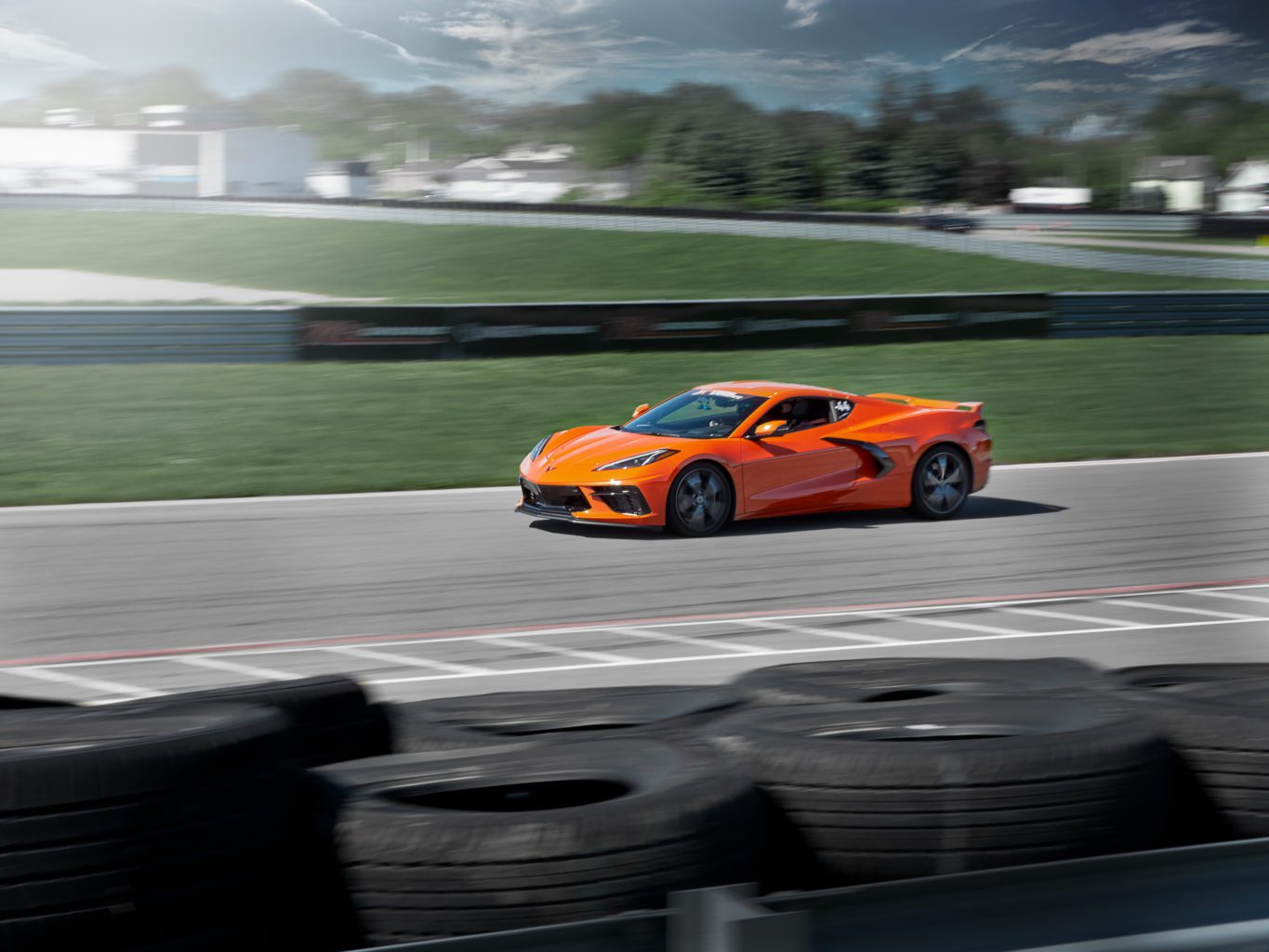
We put you behind one of many supercars from brands like Porsche, Ferrari, and Corvette for a blast thFord Mustang Shelby GT500: Those who know and love Mustangs know that Shelby and Mustang have gone together for years and the results have been some of the finest muscle machines to ever come out of Detroit. What makes Shelby cars unique is that they are rarely just straight-line machines, but offer a solid dose of handling to boot. Shelby and Ford’s latest creation is a comprehensive performance machine that boasts over 750 horsepower from a supercharged 5.2L V8 and some of the best handling specs to ever befall this iconic Pony Car.
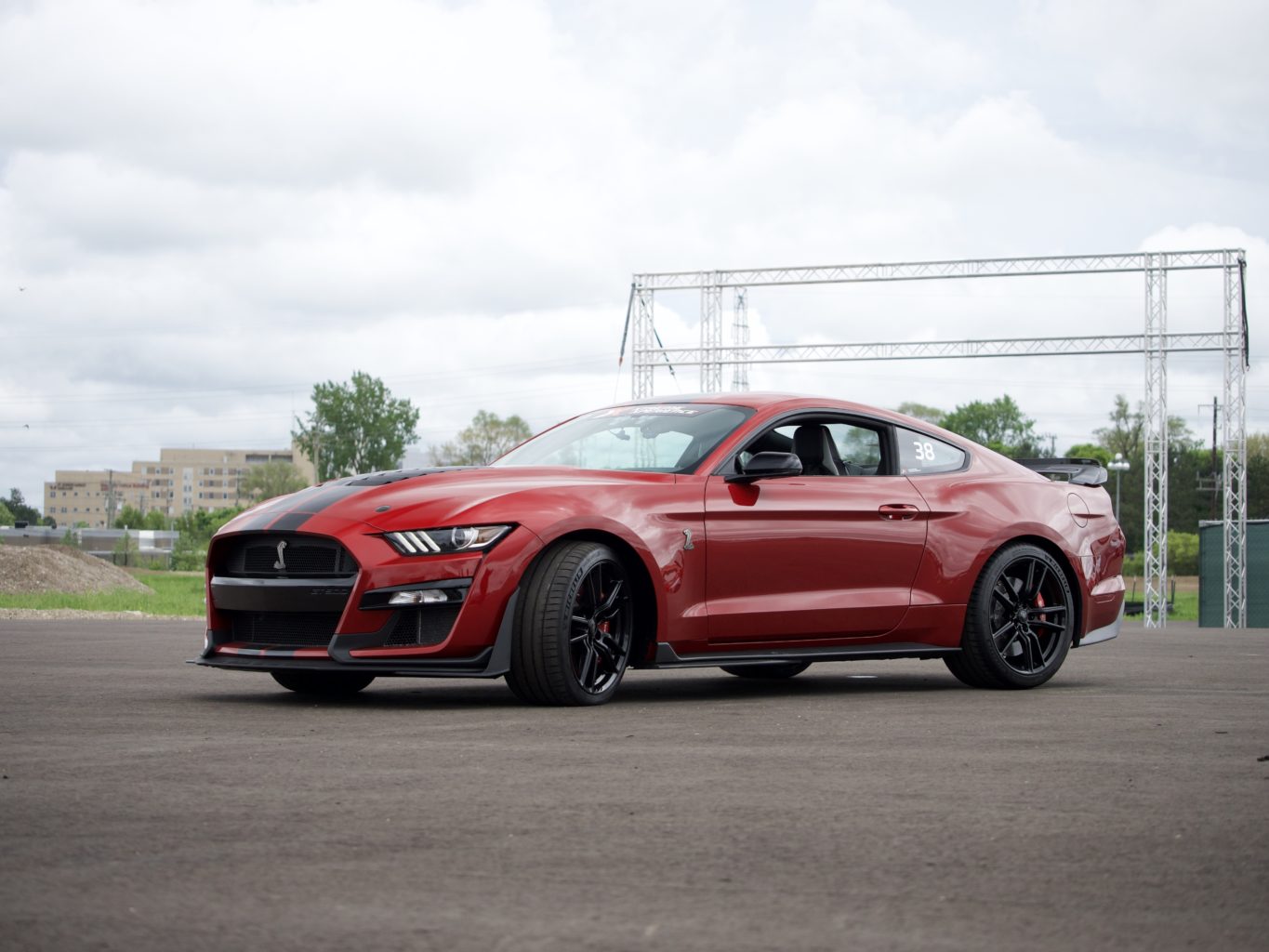
Dodge Charger Hellcat: Want to bring 4 friends along for a hellacious ride with over 707 horsepower? The Dodge Charger Hellcat offers up exactly that. One of the first American companies to debut a crazy horsepower vehicle, Dodge brings together a relatively comfortable, full-size sedan together with a track monster. Yes, it’s heavy and no, it’s not going to corner as well as our GT3 RS, but seriously, it’s monumentally quick in a straight line and it does fairly well out there on the track. We love it, and we think you will too.
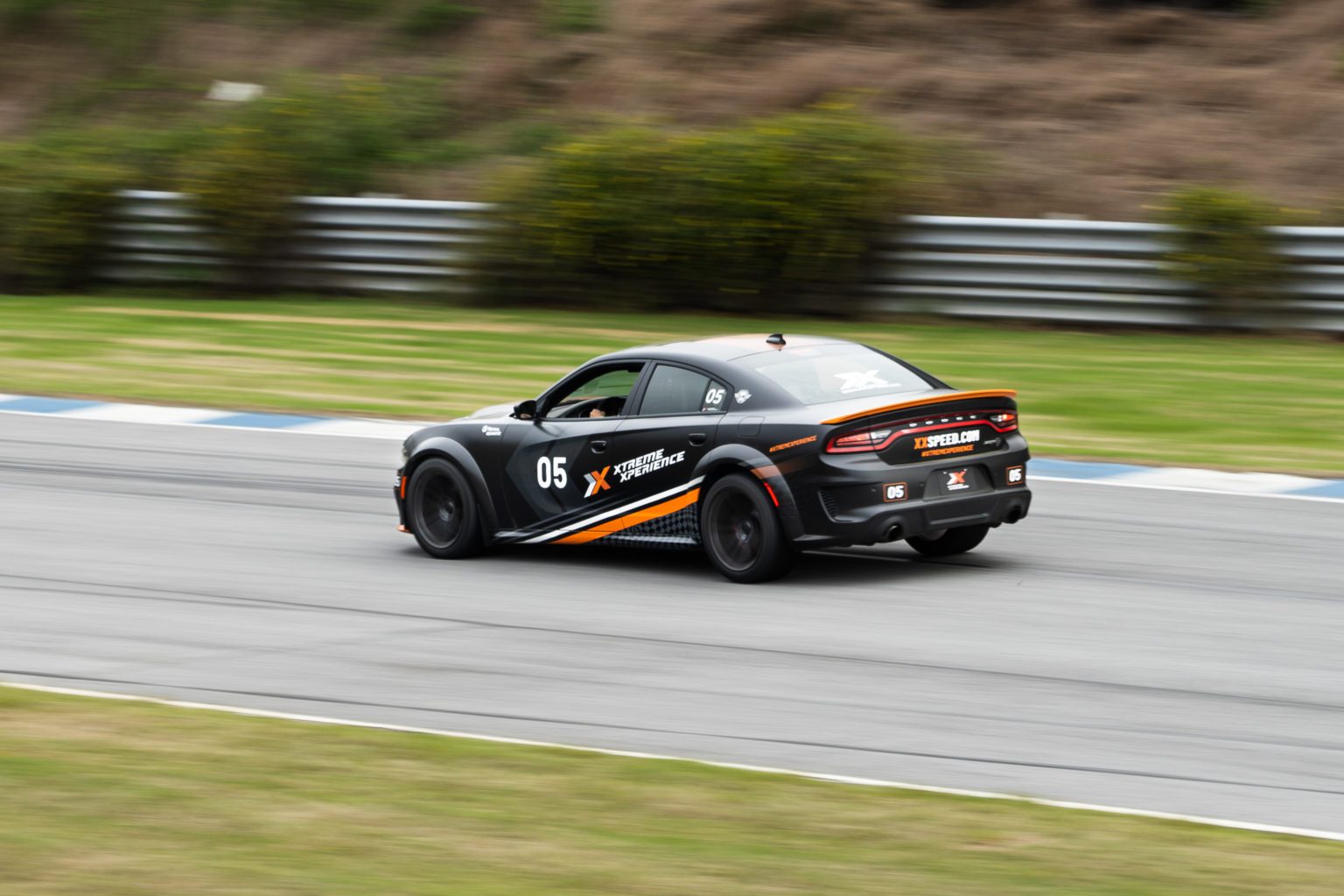
Experience American Muscle with Xtreme Xperience
Xtreme Xperience has two different experiences for the car enthusiast in your life. Our original experience is pushing an American track missile like the GT500 or C8 around some of the best tracks in the United States. You’ll get professional instructions from one of our driving instructors that will help you push it to the max and achieve some of the fastest lap times on the grid. For a complete adrenaline dump, there is no better experience. You can also ride in a Dodge Charger Hellcat and let our professional drivers show you how to push it.
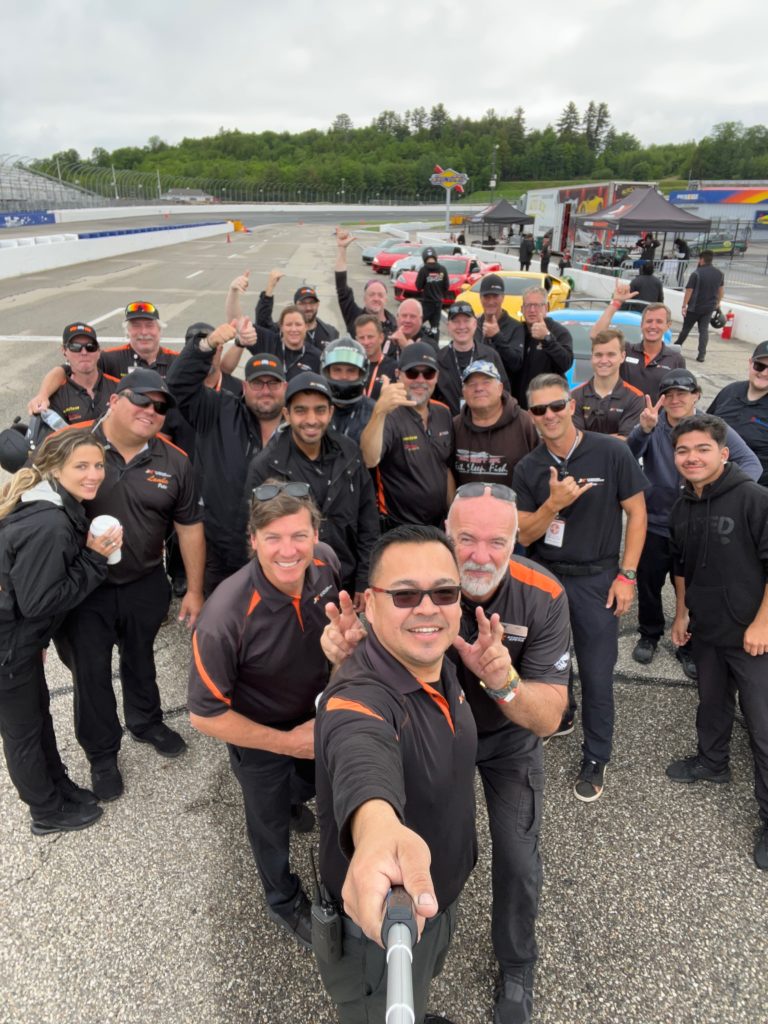
We also offer our Open Road experience, which puts you behind the wheel of a C8 Corvette on some of the finest driving roads in the country. Our teams choose routes that are seeped in natural beauty yet still provide a level of driving thrills that will leave you breathless. There is no experience quite like this.



